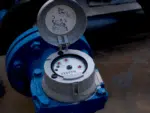
When it comes to high energy bills, especially water bills, the potential causes and solutions can be good to learn and understand to better solve where high water bills may be coming from. From residential homes to large commercial businesses, paying a higher bill can mean anything from a small inconvenience to losing millions of dollars.
Our article below can better lay out the main potential causes and what steps you can take to diminish the sunken costs of high bills.
Why are my water bills so high?
High water bills can be caused by many different factors, some that may not be in your control as a consumer – but in that same regard, it is up to you as the consumer to ensure that your bills and metering are all up to date and being measured correctly to ensure that you’re getting the best bill without overspending.
The main factors for high water bills are typically:
- Irrigation, such as regularly watering your lawns or gardens, can use a substantial amount of water that we don’t think about. This also goes for businesses as well, especially if there are water features or other landscaping around the buildings. Abnormally hot and dry weather or additional watering of new landscaping on your property can result in even higher water consumption, which adds up. Irrigation systems do vary widely in their efficiency as well, since one system can use vastly more water than another system.
- Keep in mind to track your water usage with irrigation/landscaping and see if there are any ways to use less water.
- Any changes in your water usage in general will also affect water billing. New appliances, filling pools, power washing, and other construction projects that utilize water usage can spike your bills. This one also applies to industries and businesses that use water often or have a new project that requires cleaning or otherwise, that can stack up the usage that you wouldn’t think to include, which can build up fast.
- More accurate readings due to a new meter can increase your water and sewage charges, as the more accurate readings can give better results. The benefits of having an updated meter are that it can also end up saving you money, as well as identifying any problems.
- A water leak on your side of the meter can waste an astounding amount of water that you may not be realizing. The average leaky toilet alone can waste upwards of 200 gallons/757 litres of water per day. If that were to persist, that would be over 6,000 gallons/23,000 litres of water a month and could skyrocket your bill by hundreds or thousands of dollars. Imagine that on a large scale, such as in an industrial setting. Toilets, water heaters, water softeners, in-line humidifiers, and irrigation systems are the most common sources for leaks that may not be checked as often as they should be until there is a larger problem at hand to deal with.
- Meter differences such as the age of the meter, the location of it, objects placed over the meters, and various other factors can hinder or help the end result of your water bills, making them possibly more expensive, as the proper meter reading may be disturbed and can’t provide proper hourly usage data.
- The largest water users in a typical household for residential areas and bills are maybe not what you would expect, such as toilets, washing machines and washing clothes, and showers, as these account for about two-thirds of the water used in average households.
What can you do about high water bills?
When you start getting high water bills and aren’t sure what to do, there are some measures that can help lower them.
Most importantly, finding the cause of the heightened bills in the first place. One of the major reasons for high water bills is typically leaks around toilets, within certain pipes, faucets, hose bibs, irrigation systems, and even home appliances such as dishwashers and laundry centers can put a big dent in water usage and high bills.
Finding the root cause is the main thing you can do as a consumer to ensure that you’re getting a fair water bill without anything in the way that’s causing disruptions from your end of the line. This is doubly important when you’re in a large business or run industrial sites, as the leaks and broken pipes can cause a much larger issue and become much more expensive.
Routinely checking your home or business for leaks from home appliances and any other main culprits will significantly change the outcome of your bills and is the first thing you should do to make sure everything is in working order. It also helps to do routine checks and maintenance so that when something does happen, it’s easier to mitigate the problem before it starts or gets out of hand and becomes worse. Easing your bill starts with making sure there aren’t any problems in the first place, and once that is done, it’s easier to start ruling out other problems that could be causing rising bill prices.
To check for leaks yourself, start with these simple tests, where possible:
- Check your water meter for movement. The face of your water meter (depending on the meter and where it is placed in your home or business, of course) may include a flow indicator in the shape of a red triangle or a black star in some cases, that will spin as water flows through the meter. To check for leaks, turn off all indoor and outdoor faucets and observe the meter afterwards. Any movement of the flow indicator while not having any water in use may indicate the presence of a water leak in your system, and if that is the case, you may want to contact a plumber to help investigate if you think you may have a leak. You also may want to give the meter a few minutes after shutting off all water in your home, as it may take some time to settle/stop movement.
- Conduct a dye test on your toilet. Toilets are a common cause of leaks and are rarely tested to be the cause of them. These leaks themselves can waste gallons of water if they are running and flowing constantly or leaking without any indicators. To check for leaks with these, place food colouring or dye test tablets (that are available at places such as Canadian Tire or Home Depot, depending on where you live and what is available.) Put a tablet or some dye into the tank at the back of your toilet and do not flush. Wait and observe for 10-15 minutes. If the colour does seep into the toilet bowl itself, then you have a leak.
- Look at your usage and monitor your bills. This may seem like an obvious one, but it is important to keep track of your water use and how much you’re paying for all of it, and if your usage and bills have gone up, but you’re sure that you haven’t been overdoing it on anything such as running more laundry or watering the garden more often, be sure to follow up with checking for any leaks around your home or business areas. There are also, of course, pipes that you cannot check, such as those buried underground. You may not be able to check these, but you will pay for them if there are any leaks that you’re unaware of, as the usage will be higher than normal. If you keep track, then you’ll have an easier time knowing if something is amiss.
- Check other points of interest for water, such as outdoor garden hoses, spigots, and others, if you have any water features or pools. You can check your spigots by attaching a garden hose to them, and if water seeps through the connection while the hose is running, replace the rubber hose gasket and check to see if all connections are tight. It is also recommended to call a professional once a year to check your irrigation system if you have one. A system with a small leak, for example, could be wasting upwards of 6,400 gallons of water per month alone.
- Other areas that may not be checked regularly include the back of cabinets, underneath your sink or next to your dishwasher and under basins. Any signs of mould or foul smells that are otherwise unexplained could be a leak. Finding these before they escalate could save thousands or even millions of dollars, depending on whether it’s residential or larger businesses, where small leaks can equal up to larger problems and costs, especially if they get out of hand. Also, keep in mind that the older your home or building, especially if it’s 25 years old or more, the plumbing system itself may be on the declining side of its life expectancy. Inspect all accessible connections and keep up with the maintenance.
With all of these tips and what to look out for noted, the main takeaway is to keep vigilant about routine inspections and tests for leaks around your home if you suspect that your bills are getting higher without any additional usage.
If you are using more than normal, try to use less water around your home and/or check all of your appliances and if you’re unsure but want a more thorough inspection, contact a professional that will come and check all of your pipes and systems with proper gear and equipment meant for helping any issues you may find.
It’s better to check and find leaks early rather than find out later and end up costing yourself a much more expensive bill.
READ MORE: Factors that Affect Water Rates in Canada











